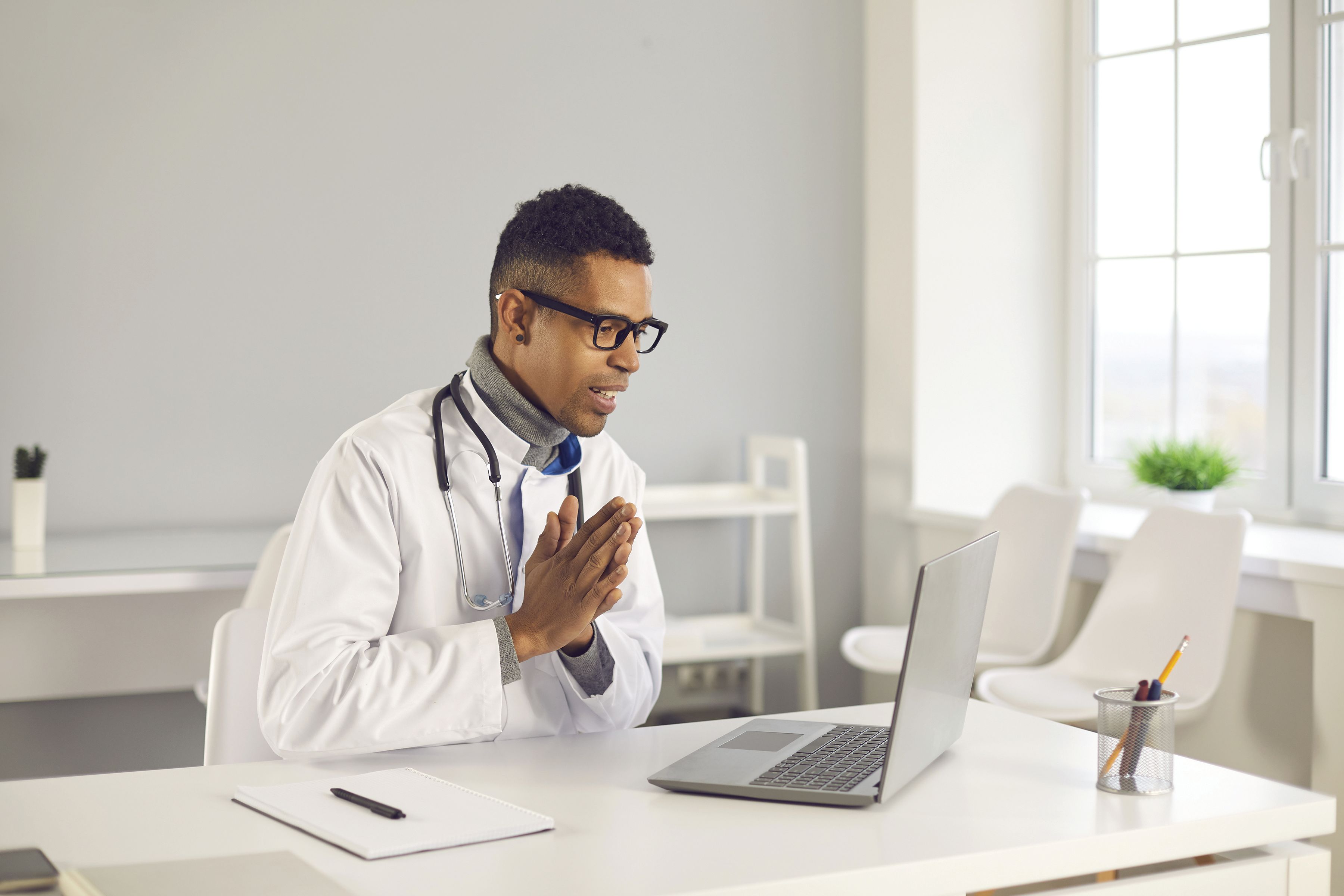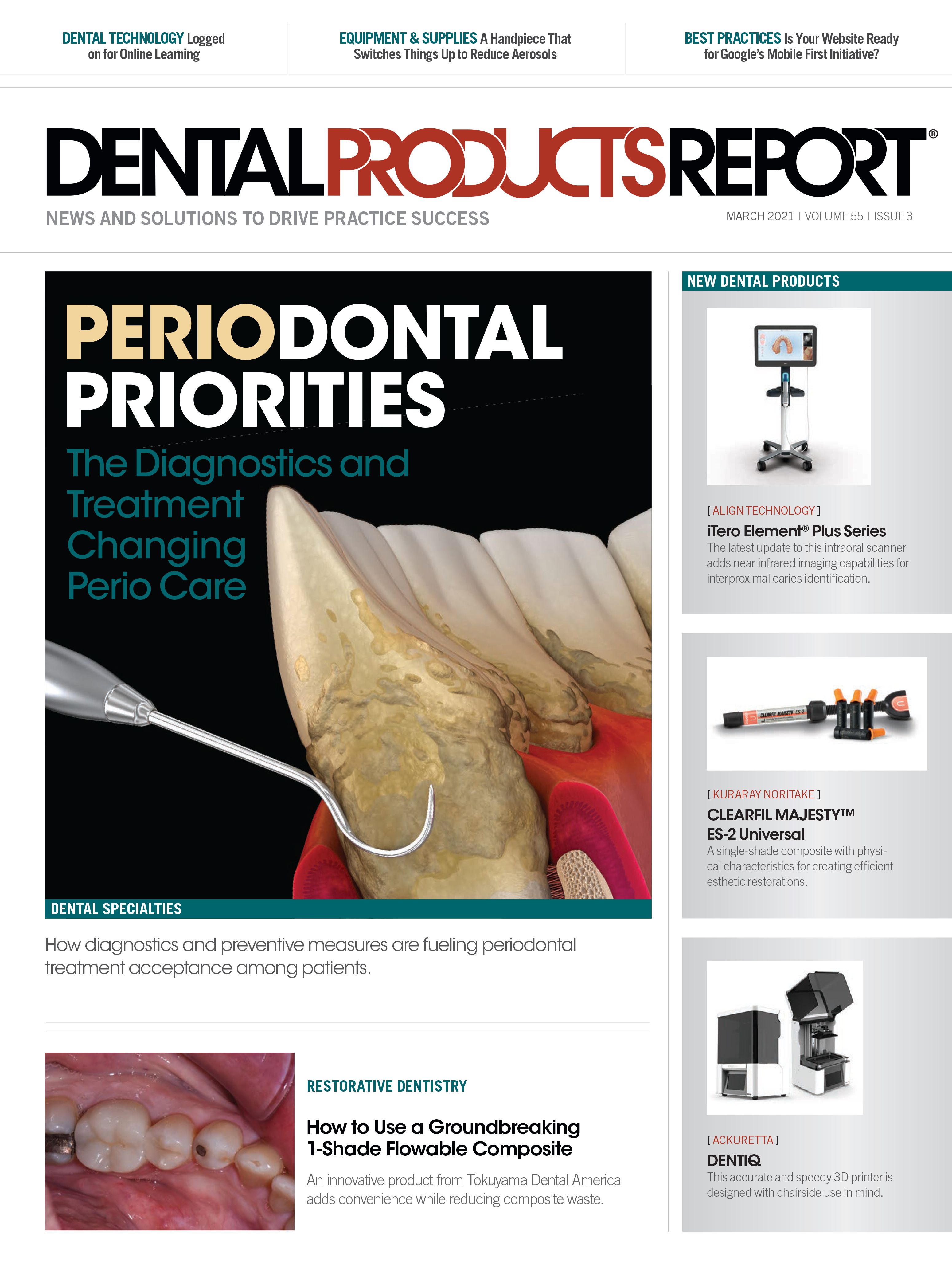Teledentistry Meets Telemedicine: A Virtual Collaboration
The TeleDentists, MediOrbis work together to advance telehealth and improve care for patients of dental, medical providers.
STUDIO ROMANTIC / STOCK.ADOBE.COM

We are in a very exciting world today in which dental providers and medical providers are increasingly collaborating on their patients’ care. Telehealth is a technology helping to lead the way. The following are excerpts from a conversation with Maria Kunstadter, DDS, who is founder and the chief dental officer of The TeleDentists, a popular teledentistry platform, and Jonathan Wiesen, MD, founder and chief medical officer of MediOrbis, a fast-growing telemedicine platform. Both The TeleDentists and MediOrbis offer respective virtual dental and medical provider networks.
The full podcast can be found at www.dentalsoftwareadvisor.com.
Mike: Maria, Jonathan, I know your respective telehealth companies, The TeleDentists and MediOrbis, have recently announced a partnership to work together to help medical providers and dental providers collaborate using telehealth technology. Can you talk a little bit about how your partnership came about?
Dr Kunstadter: For years, medicine has been calling for an integration of oral health, and medical health. And with teledentistry as a subspecialty of telehealth, it was a logical choice to bring them together on the same platform. I’ve heard from medical specialists that they know oral health is important, but they don’t know what to do about it, so they don’t mention it to their patients. That was the driving force to bringing MediOrbis together with The TeleDentists. Now patients at the tip of their fingers, can have access to either your physician or your dentist, real time. That’s a great opportunity that brought us to work together on this exciting collaborative project moving forward.
Dr Wiesen: The emphasis in medicine today is really on collaboration—working together with different specialties, different individuals with different skills, and it was in that spirit that this partnership just seemed to make a lot of sense. In clinical medicine I work in the intensive care unit in critical care, and we’re always consulting specialists and getting opinions, and in internal medicine and general medicine, we do the same. So it just made a lot of sense to bring as many different subsets of health care together, to be able to provide a more comprehensive solution.
Mike: Maria, I saw a presentation that you gave with a very interesting slide really struck me. It talked about how a lot of people go to dentists, but they might not go to their medical provider, and then conversely, a lot of folks go to physicians, but they might not go to their dentist. Can you talk about this chasm and what’s going on here and the problems we have with this?
Dr Kunstadter: The graphic you were talking about, Mike, is that 180 million individuals, before COVID-19 [coronavirus disease 2019], saw a physician but did not see a dentist in a year, and 28 million people saw a dentist but didn’t have a physician. For practicing dentists they were recommending we do blood sugars checks. But I kept thinking, why would I do that when I can’t do anything about it except tell my patient to go see a doctor? We have now introduced this platform to have in dental offices where … if the patient has high blood sugar, they can push a button and talk to one of MediOrbis’ virtual physicians and start being treated and maintained for diabetes or whatever they need to. If you send somebody to go see a doctor, sometimes they never do. So if you’re right there and say, “Let’s get you connected to a doctor that can maintain and monitor this condition and get you healthy,” that’s such a service to be able to offer to patients, and the convenience is everything now.
Mike: So, Jonathan, having been in medical software and technology myself for a number of years, including work in health information interoperability, I’m really interested… Are you an outlier out there in medicine talking about the need to collaborate with dental counterparts or is this a movement happening? What’s going on in medicine in terms of oral health care awareness and working with the dental community?
Dr Wiesen: I think it’s hard to look around in today’s environment and not see that digital health, telehealth, and remote access are words that are being thrown around in a way that they never have been in the past. And I’ve seen everything from telemedicine for neonatology to telemedicine for seizure management and the management of refractory epilepsy to transplant medicine being managed by a remote health and telemedicine platform. The list goes on and on and it’s literally endless. This partnership with The TeleDentists is an amazing program, an opportunity to be able to provide remote dental care. Honestly, I would be shocked if there’s anyone that’s around in health care today that if you told them, “Hey, you know, I’d like to bring a dentist remotely,” would give you a funny look, because it’s almost an assumption at this point that almost any type of clinical care can be provided remotely.
Mike: Maria, talk to me a little bit about where you think dentistry and dentists in general are today in the awareness of the need to collaborate with medical counterparts.
Dr Kunstadter: I can tell you that since 2000, the surgeon general called for an integration of oral health and primary care. The Academy of Family Practitioners, the Academy of Pediatrics and the American Dental Association and the CDC…all of these organizations have been saying for 21 years…, “This needs to be done to improve patient health.” So, it is finally happening. It is not yet what I would call mainstream. Every time a blood pressure is taken in a dental office, which is actually required by many state dental boards, there needs to be the next step if there is unrelenting hypertension in that patient, even during that visit, because dentists aren’t supposed to treat the patient with high blood pressure for any injections or anything along that line. So rather than say, “OK, I’m going to have to send you out”, now we can have a virtual tool that we haven’t had before. I think the adoption will happen much more rapidly by making it easy and simple and straightforward. In the past, I would send them out and hope they come back and then you don’t see them again. Now that you can have it in the office when they go on their way home, they can pick up any hypertension medication that the doctor may say they needed to start. The patient has been value added, dental and medical care right there on the spot.
Mike: When I am helping my dental service organization (DSO), group, and practice clients evaluate and select software solutions, I am always talking workflow, workflow, workflow, when we look at various products. So, I am really interested. Can you get into a little detail of the actual virtual workflow between physicians and dentists? How is the patient involved?
Dr Kunstadter: When the dentist has a need for a physician, they will just hand the patient a tablet or go to the computer right behind them. In this case, they click on MediOrbis and, for example, say, something like, “Hey, I’m in Dr Jones’ office and they can’t get my blood pressure down. I’ve had this problem for a while.” Then the patient can have a telehealth consult right in the cubicle in a few minutes. They can actually speak to the physician, get on the road to some sort of mediation of their condition, and then they’ll turn to the dentist and say “Thanks, because I wouldn’t have gone to a doctor in the first place.” So, the same can happen when they go to a physician connected with MediOrbis capability … they can click on The TeleDentists if they have a dental concern.
Dr Wiesen: It is so important to meet patients where they are and not to demand things of them to meet your expectations. Being able to provide simple, streamlined solutions, being able to make things more accessible and more available allows patients to get the care that they need in the manner in which they need it, rather than trying to make them conform to a very strict, rigorous, and confined infrastructure, which is what we were unfortunately relegated to for many, many years
Mike: Well, this is really exciting and what I consider somewhat of a groundbreaking partnership in the world of telehealth, and I really wish you both success. I expect to see a lot of case studies coming out in the coming months that will help drive this movement toward using telehealth for collaboration between dental and medical providers for the benefit of their patients.
